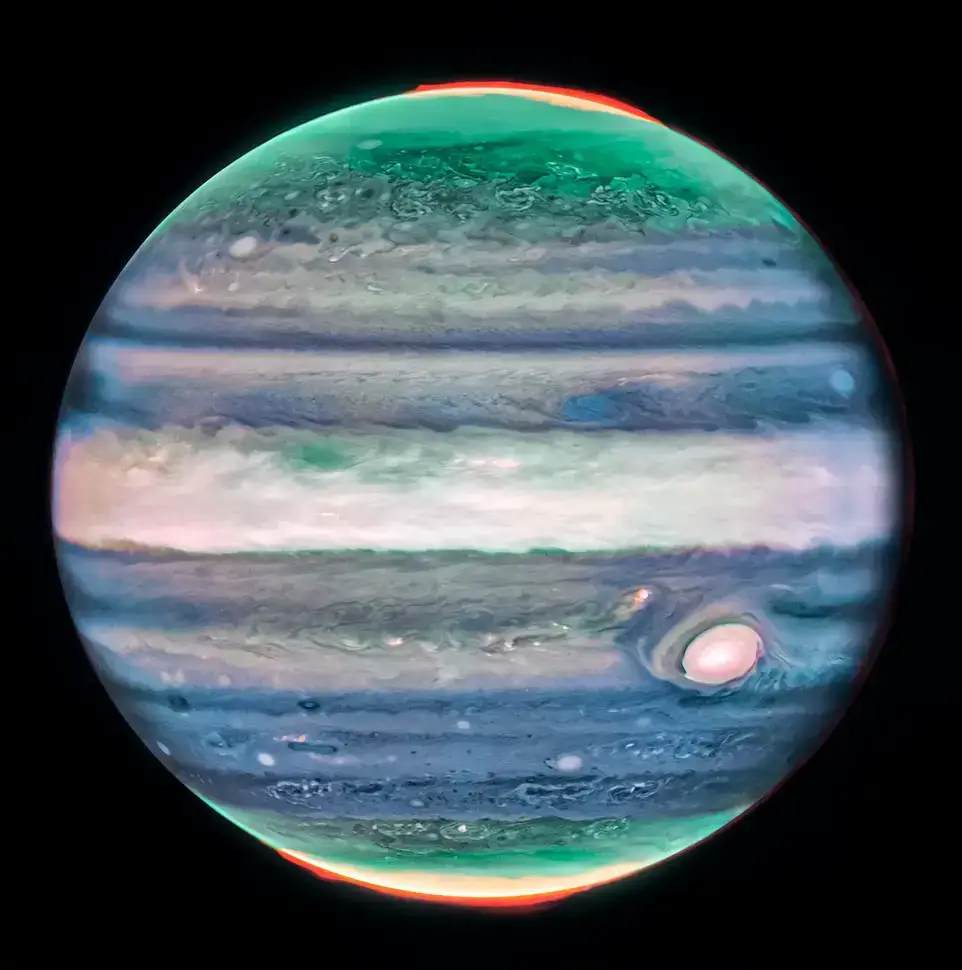The James Webb Space Telescope discovered a previously unseen jet stream in Jupiter's atmosphere. Similar phenomena have been observed in Saturn, and both may be related to temperature variations in the atmospheres of the gas giants

Fast jet streams are a common feature of atmospheres
of many planets. On Earth, jet streams form at different latitudes and move around the planet, changing their latitude and reaching speeds approaching 400 km/h at a height of over 10 km above the surface. In the giant planets, Jupiter and Saturn, jet streams are one of the main features of the atmosphere; They are perfectly aligned with the parallels and are known as azonal currents. Rightfully so, these currents change direction at different latitudes and reach maximum speeds close to 500 km/h.

On July 27, 2022, the James Webb Space Telescope (JWST) observed Jupiter's atmosphere as part of an international "Early Science" program involving researchers from the Planetary Sciences Group of the University of the Basque Country (UPV/EHU). Ricardo Huasso, a lecturer at the Faculty of Engineering - Bilbao, designed and led the analysis of the series of images that the JWST acquired of the planet.
The analysis of the data, now published in the journal Nature Astronomy[1] shows the discovery of a jet stream in the atmosphere of Jupiter whose speed exceeds 500 km/h. The stream, located 40 km above the main clouds in the planet's north polar region, could change the current understanding of Jupiter's atmospheric system.
Additional findings
The researchers revealed that there are tracks of particles moving through Jupiter's atmosphere at high speed as part of the polar aurora, as they are emitted from the planet's north and south poles. The new data also show how Jupiter's extreme weather and complex atmospheric properties erupt into space dramatically, creating huge eddies and deep convective storms.
More of the topic in Hayadan:
- Vapors of heavy metals were unexpectedly found in comet Borisov that arrived outside the solar system
- Why some red giant atmospheres have more carbon than oxygen
- Has the mystery of the missing sunspots been solved?
- The Webb Space Telescope Peeps Into Chaos - Captures Stellar Gymnastics in the Wheel Galaxy
- 13 new planets discovered around other glasses

One response
Spectacular but false images
and edited in a very professional manner.
The whole subject of space, aliens, stars, satellites outside the atmosphere, people living on Mars and all this regret does not exist at all, it's just grandmother's stories, why mislead people and deceive them. It's just a trick with the eyes.
By the way, they did a funny article in Maariv about the Hutts intercepting missiles outside the atmosphere, this is also bullshit because above us there is a firmament and no missile in the world can penetrate it and I'm sure you also know that.